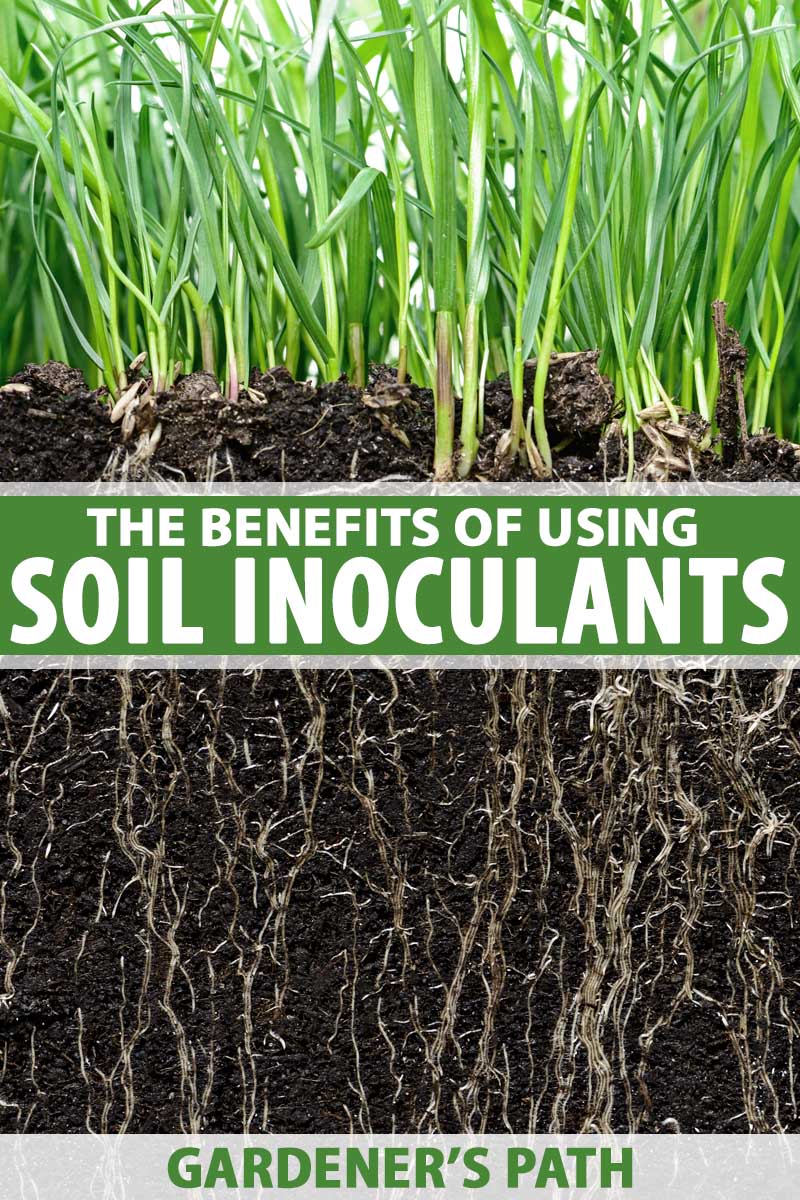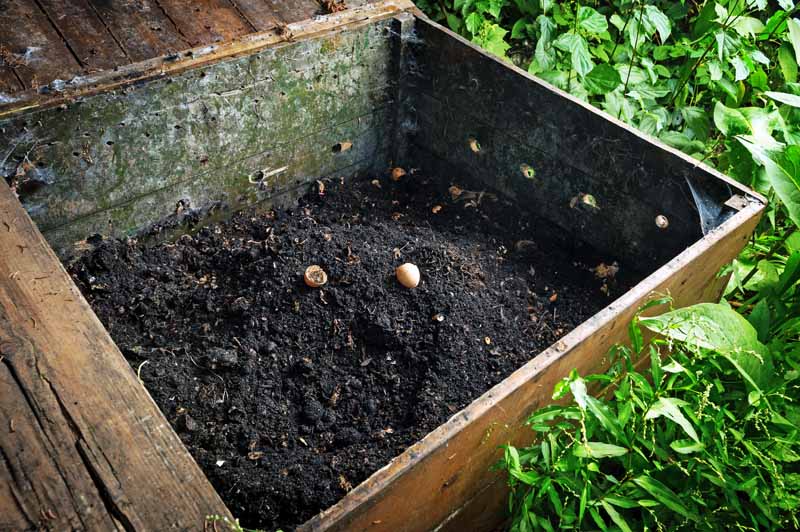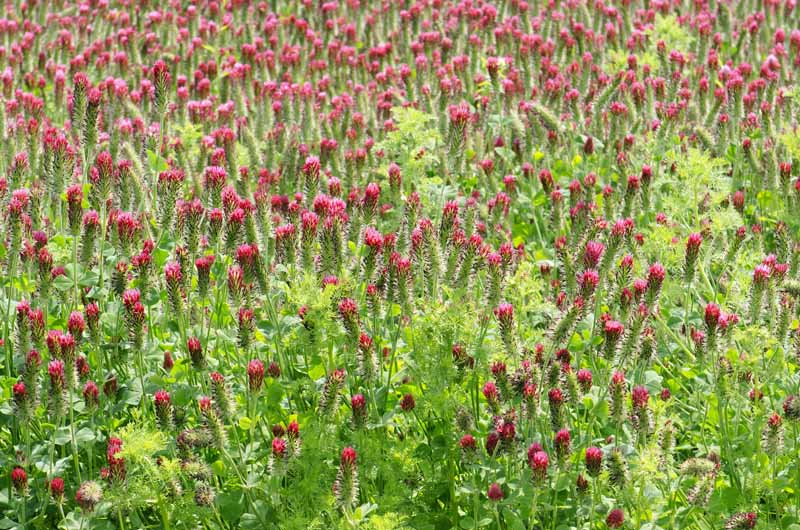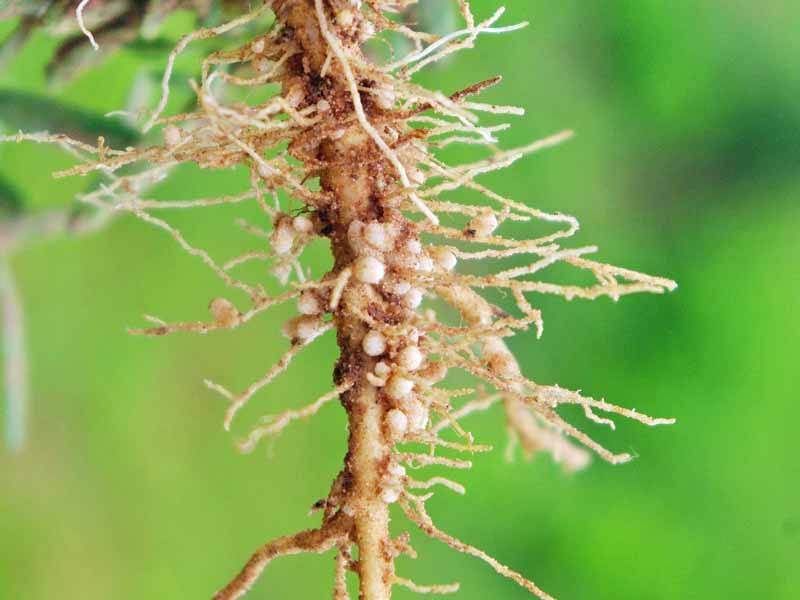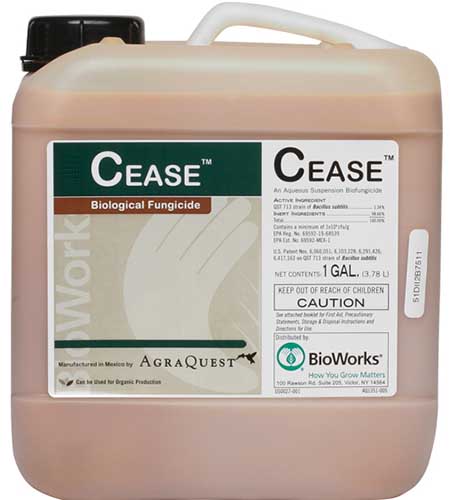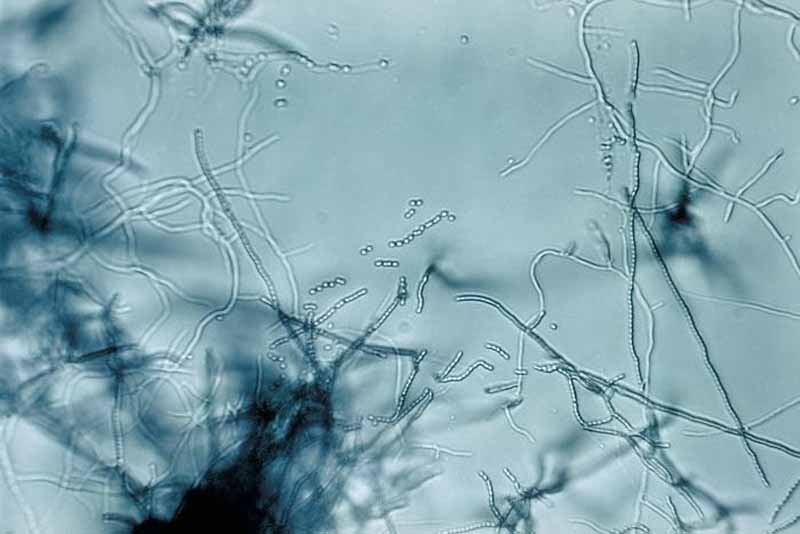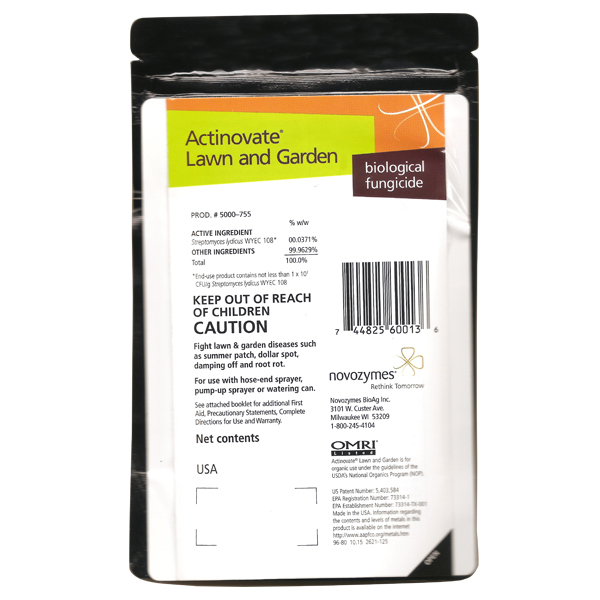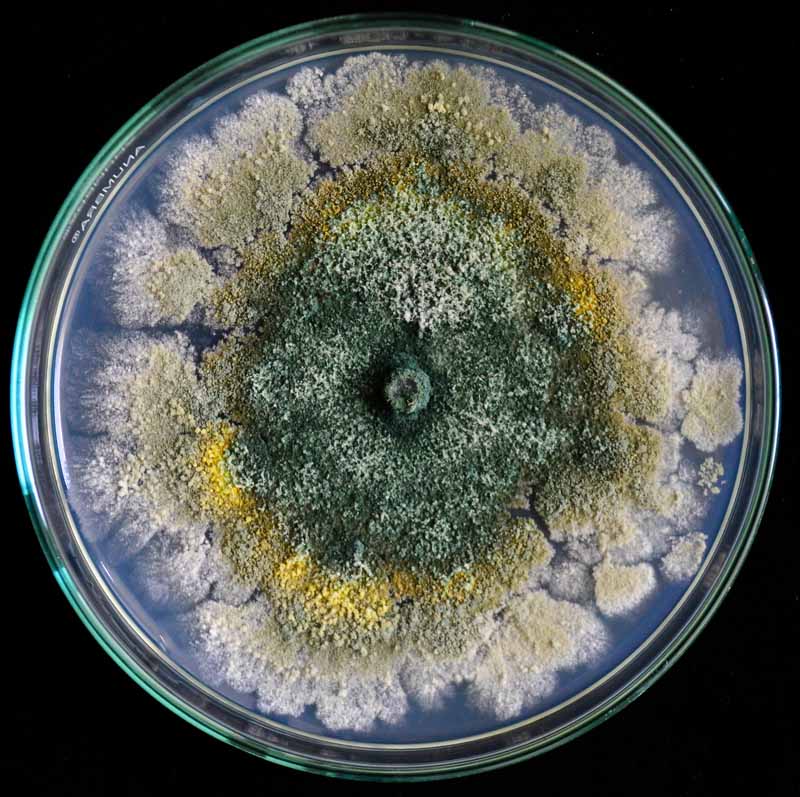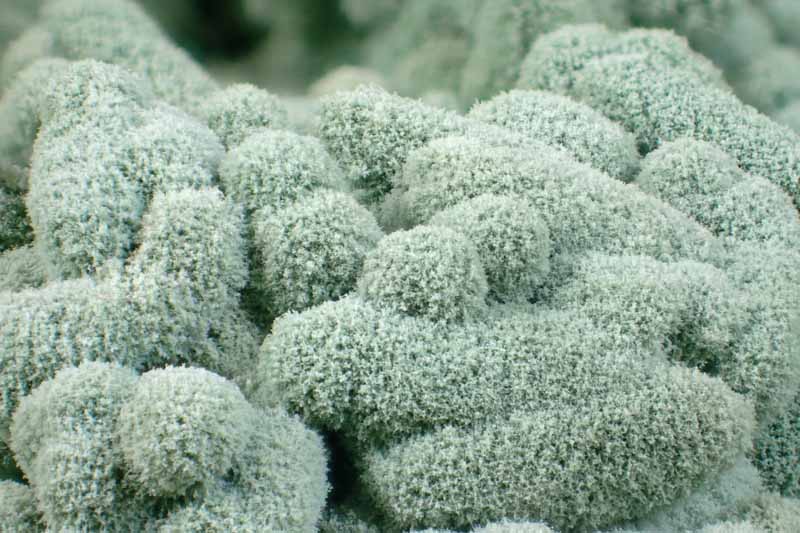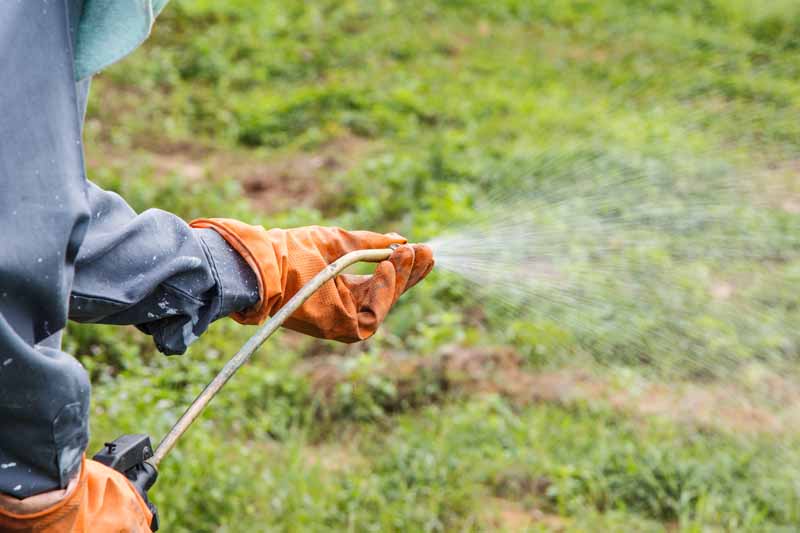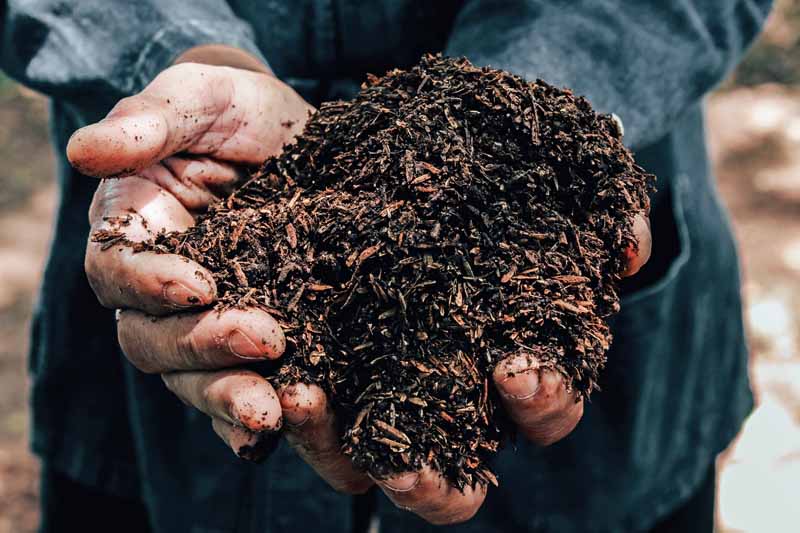Soil is actually an incredibly complex ecosystem, with billions of organisms found in a single teaspoonful. These organisms range from fungi and bacteria to earthworms, nematodes, and insects. Good soil health is critical for plants to survive and thrive, so the survival of humans indirectly rests on the health of the soil. This is so important that there are government programs working today to improve soil health. A number of these projects are specialized for urban areas and include funding to study heavy metal toxicity in the ground in New York. We link to vendors to help you find relevant products. If you buy from one of our links, we may earn a commission.
Improved moisture retention. Reduced soil erosion. Improved nutrient absorption. Protection against pathogens and insects.
Ideally, these aggregates stick together, and fungi can make this happen. They do so by secreting a sticky gel that glues the organic particles and the minerals together, helping to form humus. In addition, their hyphae thread through the small particles. The fine roots of plants also help aggregates form by growing through the smaller fragments and helping them stick together. A major advantage of humus is that it holds onto nutrients as water travels through the soil. This benefits both plants and the environment. Adding soil inoculants like mycorrhizae will help ensure that your plants grow in healthy soil that provides them ready access to nutrients, so they will thrive!
The Process of Soil Inoculation
Fortunately, you can take steps to improve the earth that your plants grow in. The process of soil inoculation involves taking specific microbes or nematodes and incorporating them into the soil, or applying them directly on seeds and plant roots. In addition, you can implement practices that will improve the microbial diversity of your soil in general. Simple measures like incorporating compost into the ground and growing cover crops can do wonders to improve the numbers of beneficial microbes in the soil.
The Plant Rhizosphere
In addition to living dispersed in the soil, many microbes (both beneficial and destructive) live in an active zone around plant roots known as the rhizosphere. This is the area in the soil where the plants secrete compounds like sugars and amino acids. In fact, up to 44% of the compounds that plants make from photosynthesis can end up in the rhizosphere. This makes the rhizosphere a relatively lush area for microbes. In addition to microbes, other organisms like protozoa and nematodes live in the rhizosphere. They feed on the fungi and bacteria that live there and release their remains as waste products. This “waste” is a great source of nutrients for plants.
Types of Soil Inoculants
Microbes in the ground help plants in many different ways. Some limit the growth of pathogens. They can do this by outcompeting the pathogens or even parasitizing them. Other microbes have symbiotic associations with plants. That means the microbes and plants have a mutually beneficial relationship. This includes bacteria that fix nitrogen or fungi that live as mycorrhizae and provide the plants with nutrients that may be otherwise unavailable. Yet others stimulate a plant’s immune system, through what is known as acquired resistance. (You know that plants have immune systems, right?) The plants may grow more robustly as a result, or they may produce chemicals to fight off pathogens or insects.
Biofertilizers
Biofertilizers are products you can buy that contain microbes that will live in the rhizosphere or on roots, and increase the supply of nutrients to the plants. This is an extremely valuable contribution to plant health. Often the soil can be full of plant nutrients, while the plants in that soil suffer from serious nutrient deficiencies. A paradox indeed. This is a particular problem with potassium (K). Up to 98% of the K in the soil is tightly bound to minerals like feldspar and mica. In fact, it so tightly bound that it is unavailable to plants. While geological weathering will slowly release the potassium, making it available to plants, they commonly suffer from a deficiency of K. Here is where microbes come into the picture. Both fungi and bacteria can help release this trapped potassium. However, so many types of bacteria release K that there is even a term for them – KSB – potassium solubilizing bacteria. Much research remains to be done on these special bacteria, but it appears that they secrete types of acids that release K from the minerals. Your immediate and logical response to a deficiency identified by a foliar nutrient analysis may be to add more fertilizer to the ground. However, that can make the problem even worse. Many soil microbes can help the plant absorb such previously unavailable nutrients, but when you fertilize, you frequently inhibit these microbes. Such inhibition is primarily a problem with large quantities of chemical fertilizer. However, it is possible to over-fertilize if you incorporate too much of a particular type of plant matter. Just be judicious and incorporate a variety of types of organic matter. Cover crops, compost, or crop residues result in a diversity of microbes, which enhances soil health.
Nitrogen-Fixing Organisms
You are probably well aware that some microbes live closely with a plant and help to make nitrogen available to it. This is how legumes can live in such poor quality soil. Microbes such as the highly specialized bacterial genus Rhizobium live in an intimate association with their host legumes in root nodules. They are able to take nitrogen from the air and change it into forms that plants can use. These organisms perform best in soil that hasn’t been heavily fertilized. Scientists think that a plant doesn’t want to part with its precious nutrients if it isn’t getting something in return.
Guard’n Seed Inoculant for Peas and Beans via ARBICO Organics Applying soil inoculants like Rhizobium is particularly important if you are planting a crop like beans or peas in earth that has not previously been used for legumes. Such soil is likely to lack a good population of nitrogen-fixing bacteria, but you can change that!
N-DURE Alfalfa and Clover Inoculant via ARBICO Organics Fortunately, wheat and corn can be helped by other kinds of bacteria that live freely in their rhizosphere and fix nitrogen.
Nutrient-Solubilizing Microbes
Mycorrhizal fungi are the most well known of this class. They live in close association with plant roots, and their hyphae extend way out from the roots. This enables them to obtain nutrients from a wide span of the earth (and also from the tiny little soil pores that phosphorus can hide in). Phosphorus in the ground is often found in forms that are unavailable to plants. But when they have mycorrhizae on their roots, the plants obtain phosphorus from the fungi in exchange for carbohydrates like sugars. In addition to improving the supply of nutrients to the plants, the extensive webs of mycrorrhizal mycelia absorb water. So, they in turn can improve the drought resistance of the plants. Different types of mychorrhizae are specialized for different plants. You can either buy a mixture of them to apply to your garden, or buy ones that are specialized for the particular type or types of plants that you are growing. Potassium, as mentioned above, and iron are other important nutrients that can be abundant in the soil but unavailable to plants. Some types of fungi and bacteria secrete organic acids that make them more soluble. ARBICO Organics™ Root Build 240 (Beneficial Mycorrhizal Fungae) Other types of fungi and bacteria produce specialized compounds called siderophores that bind with iron and make it unavailable to other microbes. The good thing about it for us is that plants can use the iron that the siderophores make available. Therefore, the plants are more inhospitable to these microbes when the earth has a lot of nutrients freely accessible, like those released by chemical fertilizers.
Microbes that Produce Plant Growth Hormones
Some microbes produce chemicals that directly stimulate plant growth. This can be so beneficial to the plants that they can sometimes outgrow the pathogens! One example of this is fungi that produce a hormone called gibberellin that helps seeds germinate and improves plant growth. This compound was identified from an organism that caused a rice disorder called “foolish seedling disease.” The infected rice elongated unnaturally and had pale yellow leaves. Japanese scientists isolated gibberellin from the fungal pathogen Gibberella in 1938. Their research came to prominence after the end of World War II and led to the discovery of gibberellins first in fungi, and then in plants. In addition to gibberellin, soil microbes can produce the important hormone auxin. Many strains of bacteria in the earth produce auxin, which has an enormous effect on plants. It helps to:
Stimulate the elongation of shoots. Control the orientation of seedlings. Stimulate roots to branch. Promote the development of fruit.
Many microbes that make auxin are good biocontrol agents and can compete against plant pathogens.
Biopesticides
Other microbes will help keep pathogens in the soil in check. There are even types of earth called suppressive soils that are so full of these microbes that plants generally grow disease-free in them. One of the problems with soil-borne fungal pathogens is that they can sap the growth of your plants without showing other visible symptoms, so you might not even realize they are there! But your plants will. Biofungicides are a type of biopesticide. They are microbes that help control plant pathogens. One advantage of using biofungicides instead of chemical fungicides is that they can frequently combat pathogens, while allowing beneficial plant microbes to continue thriving. The microbes can restrain the growth of pathogens in two ways. One is to directly prevent their growth. They can do this by producing chemicals like antibiotics that will kill other bacteria. Some bacteria even produce compounds called bacteriocins that kill other strains of the same species. Another way to limit the growth of a pathogen is to feast on it! Some microbes parasitize others and live inside of them. Most fungi contain chitin in their cell walls. Many plants and some fungi produce an enzyme called chitinase that degrades the fungal cell walls. Crustaceans also have chitin in their cell walls. Many years ago people used to spread crab shells on their fields to draw out the organisms that break down chitin. However, times have changed, and you can now buy microbes to do the job for you! Other microbes just outcompete the offending pathogens by efficiently colonizing the roots.
Bacillus Species
Tips for Using Soil Inoculants
Remember that while the bag of microbes that you buy may look like any other product, it contains living organisms. Be careful with how you handle them. The most famous one used as a biopesticide is Bacillus thuringiensis. These bacteria are certified for organic gardening and produce a toxin, known as Bt for short, which naturally kills insects. If you’ve heard of Bt, it might be because a common class of GMOs has been engineered to produce this toxin and produce plants that are naturally resistant to insects. Bacillus subtilis is widely used as a biofungicide. This organism participates in a powerful combo of activities. It produces antibiotics, limits plant pathogen spore germination, and is thought to trigger an immune response in plants.
CEASE Biological Fungicide (Bacillus subtilis) You can find CEASE available from Arbico Organics. Another species that is a common soil inhabitant that is used as a soil inoculant is Bacillus amyloliquefaciens (BAA). BAA can grow on roots and form a physical barrier that prevents other microbes from colonizing the roots. Because of this tendency, it can prevent many types of diseases.
BONIDE® Revitalize® Biofungicide (BAA) via ARBICO Organics There is also evidence that BAA can cause a plant to ramp up its defense mechanisms. That is another way it can help plants to resist disease. And yet another factor that makes BAA such a useful soil inoculant is that some strains produce enzymes that break apart (lyse) other kinds of bacteria. Unlike B. subtilis, BAA will not overwinter in the ground. If you use this type, you will have to reapply it each year.
Streptomyces
This is a rather odd organism that is a bacterium but produces mycelia-like threads. Specific types of this genus, including Streptomyces lividicus, are sold as biofungicides. Many species of Streptomyces produce antibiotics that help them compete against other microbes in the earth. They were the source of such classic antibiotics as streptomycin, tetracycline, and chloramphenicol that have been widely used in medicine. Conveniently, they also produce antifungal compounds that have been used in medicine, and help to control soil-borne fungi. S. lividicus is no exception and produces the antifungal compound natamycin, which is used to treat eye infections. This species is also highly effective at outcompeting fungi in the rhizosphere because it feeds off plant byproducts. This deprives pathogenic soil fungi of an important source of nutrients.
Actinovate® Lawn and Garden Fungicide (Streptomyces lividicus) via ARBICO Organics In addition to the plentiful fungal pathogens in the earth, S. lividicus can also protect against leaf pathogens, such as powdery mildew and rust. Read more about using Streptomyces lividicus to comabt fungal infections here.
Trichoderma Harzianum
This section would be incomplete without a description of Trichoderma. These fungi are widespread in the soil and live on plant roots. They are so important that two volumes of books were published on them in 1998. The monographs were edited by two prominent researchers in the field – Gary E. Harman and C. P. Kubicek. A number of species of Trichoderma have been sold commercially. However, a 15-year breeding program at Cornell University produced a powerhouse strain of T. harzianum that works well in the field. (Many microbes work well in the lab but peter out in the field.) It is commonly sold as strain T-22. Living on the roots puts the fungus in a good position to prey on the kinds of fungi that rot roots, including Pythium (damping off), Fusarium (wilts), and Rhizoctonia (root rot). T-22 releases a large amount of chitinase into the soil that breaks down the cell walls of the other types of fungi.
Once it has breached the walls, it can grow inside the fungi and parasitize them! This phenomenon is known as mycoparasitism (with “myco” meaning fungi). In case you wonder why Trichoderma’s chitinases don’t dissolve itself, scientists have asked that same question. An enzyme like chitinase can only act on a compound if it can access it. Austrian scientists believe that the mycelia may be protected by proteins that block access to the organism’s chitinases.
RootShield® Home & Garden (T-22) via ARBICO Organics Trichoderma has an advantage over many other soil inoculants because it grows well on plant roots. You only need to apply a little bit, and it will colonize the roots for a whole growing season. Other microbes need to be applied directly to the seeds for them to be able to colonize roots. One caveat is that Trichoderma improves the growth of plants that are weakened. So you may not see as much of an effect if your plants are already in their prime. Read our complete guide to using Trichoderma in the garden here.
Nematodes
While you may think of nematodes as plagues in your garden, other types of these roundworms are highly effective at controlling a broad of array of insect pests. Part of the reason that nematodes are such effective killers of pests (but not beneficial insects) is that specialized bacteria live in their guts and can kill insects within 24-48 hours. Whatever your soil type, you can find nematodes to help you in your quest to rid your garden of pests. Nematodes can live in areas as diverse as deserts and even ocean beaches.
Triple Threat Nematode Bundle via ARBICO Organics Their use in controlling insects is so promising that hundreds of researchers from more than 40 countries are working to make new insect-killing nematodes available. Read on to choose the right nematode to control particular insects. The best place to keep them is in the refrigerator. It is not a good idea to leave them in the sun in a hot car or truck, for instance. Follow the manufacturer’s instructions! The best practices for the applications of soil inoculants can vary depending on what part of the country you are in, so there are no one size fits all instructions. Also, you should be careful when handling them. While these organisms are pathogens of other microbes and generally not humans, people with compromised immune systems could conceivably be infected.
Mining New Types of Soil Inoculants
You probably know that scientists are constantly discovering new and highly unusual microbes in extreme environments. This research fundamentally advances the knowledge of biology, since some of them are radically different from what was previously known. For example, bacteria in deep sea vents don’t need oxygen and use other compounds instead! This same approach is used to identify new strains of fungi or bacteria that could help crops in the future. Microbiologists go to extreme sites like the high desert or cliffs surrounding volcanoes to isolate bacteria from plant roots. The idea is that a microbe that helps a plant grow in an extreme environment could do so with crops as well. These scientists perform detailed genetic tests that reveal genes that produce antibiotics, or plant growth hormones like auxin. In addition, they test these bacteria against other bacteria in the lab to find ones that are good at outcompeting other organisms. While it can take a while to transition from lab research to direct uses in agriculture, this approach is likely to provide new and exciting types of soil inoculants down the road. With an increasing knowledge of microbial ecology in recent years, scientists have been better able to select strains of microbes that benefit plant growth and harness them to our advantage.
This area is booming with many companies that are developing their own proprietary strains of microbes to use as soil inoculants. Another trend is developing mixtures of microbes to add at once that act synergistically to improve soil health. The next few years are likely to bring a huge increase in the variety of soil inoculants available to improve your plants – exciting news for the gardener! Have you applied soil inoculants to your garden? What were the results? Share your stories and questions with us in the comments below. And for more information about all things soil, check out the following articles next:
Teaming with Microbes: A Fresh Review for Today’s Gardeners Get Your Garden Off to the Best Possible Start with a Soil Test How to Start Worm Farming: Adventures in Composting and Vermiculture
© Ask the Experts, LLC. ALL RIGHTS RESERVED. See our TOS for more details. Product photo via Verdesian Life Sciences, INTX Microbials, ARBICO Organics, Bonide, AgraQuest, Novozymes, and BioWorks. Uncredited photos: Shutterstock.

